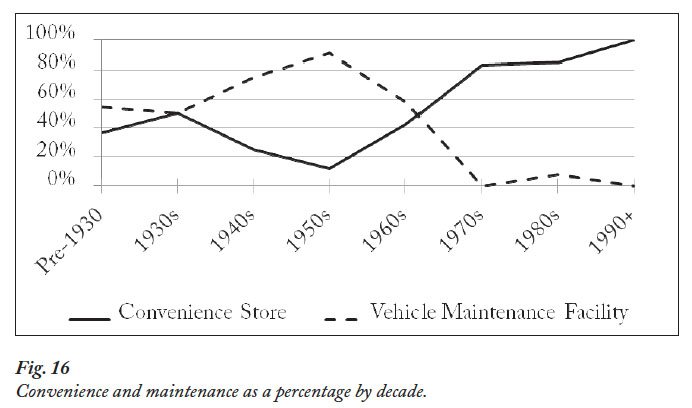Research Report / Rapport de recherche
Exploring Location Patterns of Gasoline Stations on Virginia’s Eastern Shore:
Field Logistics and Lessons Learned
1 It is a truism in geography that landscapes change through time. These changes include not only physical landscapes, but also social, economic, political and cultural ones. In economic geography, the profit imperative in capitalist societies serves as a catalyst for technological innovation and change in order for private firms to survive amid intense competition across scales. Technological innovation and change are in turn reflected in an economic landscape where cities and regions composed of firms in emerging technology sectors economically outperform those composed largely of sectors in decline, like traditional manufacturing (Parrillo and de Socio, forthcoming; de Socio 2007, 2010, 2012; Florida 2002; Jonas 1992; Fainstein et al. 1986). Further, in cities and regions transitioning away from declining sectors toward emergent sectors, the vestiges of once-dominate economic activities remain embedded in the economic landscape, often still wielding significant if declining economic and political resources (de Socio 2012; Orr and Stoker 1994). In some cases, entire industries are relegated mostly to the past, like textiles in New England, or steel production in Pittsburgh. Many of the buildings and much of the infrastructure that supported once-dominant industries often remain, either recycled into new uses, or left derelict (Jakle and Wilson 1992). Indeed, a rich economic and cultural sequent occupancy (Whittlesey 1929) is embedded in the landscape around us, often hidden in plain sight amid recycled or derelict structures (Macpherson and de Socio 2013).
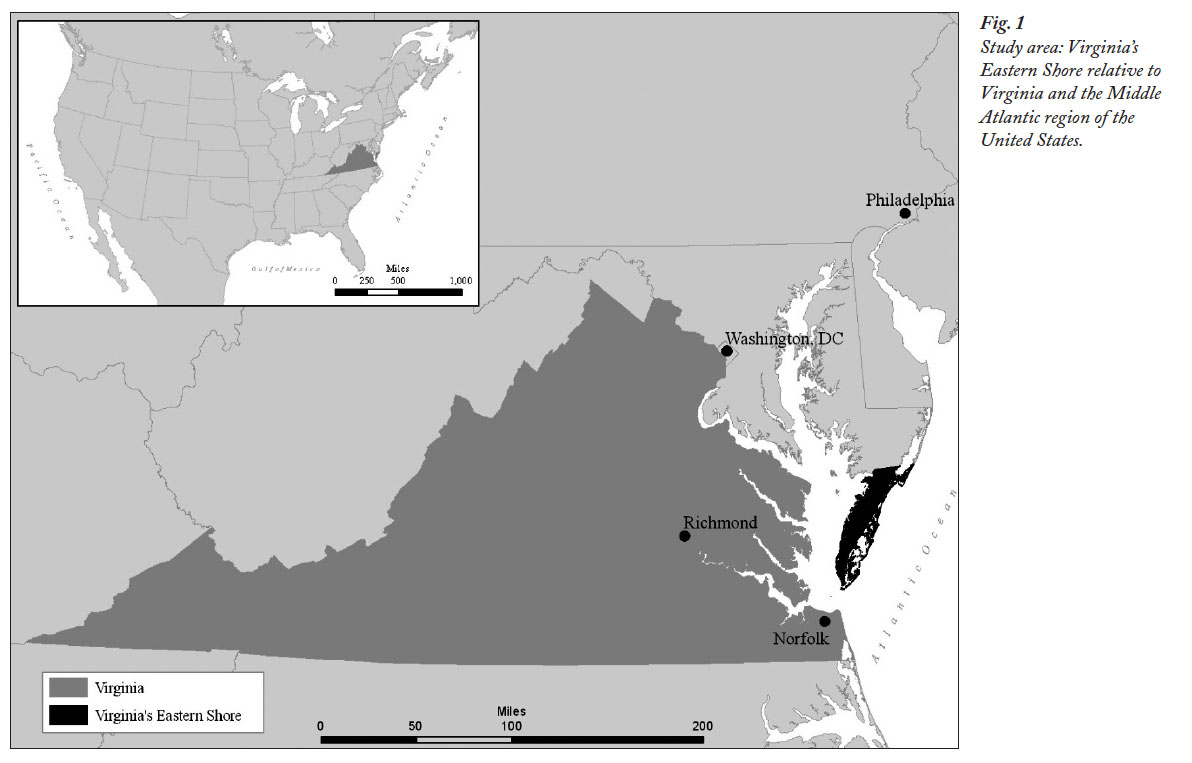 Display large image of Figure 1
Display large image of Figure 12 Economic and cultural histories of cities and regions are generally the domain of historians, interested as they are in temporal change captured largely via archival data such as newspapers, and government and corporate documents. The practice of historical geography is similar: archival data includes historical maps and other historical spatial data (DeBats and Gregory 2011; Knowles 2000; Siebert 2000). The rise of new and continuously evolving technologies like Geographical Information Systems (GIS), Global Positioning Systems (GPS), myriad spatial and non-spatial software packages, portable computers and the like present geographers with powerful tools to vastly expand the range of what constitutes archived spatial data (Healey and Stamp 2000; Siebert 2000). Further, digitizing historical map layers such as roads, railroads and other infrastructure, and recording spatial coordinates of historical buildings and other vestiges of past economic activities with tools like GPS enable geographers to perform substantive spatial analyses of past economic geographies, a project “to which geography’s spatial analysts aspired in the 1960s and 1970s” (Knowles 2000: 462). These technologies are still relatively new, and to date there remains a dearth of studies conducting spatial analysis utilizing historical data. The objective of this paper is to present techniques for collecting, classifying and preserving historic spatial data by describing the process of building an historic spatial database utilized in a spatiotemporal analysis of gasoline station location patterns on Virginia’s Eastern Shore (Macpherson and de Socio 2013; Fig. 1). Further, the paper presents the methods, equipment used and lessons learned in conducting fieldwork for developing the historical spatial database.
Spatiotemporal Location Patterns of Gasoline Stations: Research Question and Planning
3 During a university sailing club trip to a regatta held in the Hampton Roads area of Virginia, co-author Bradley Macpherson observed what appeared to be an unusual number of abandoned and recycled gasoline stations on Virginia’s Eastern Shore (Fig. 2-4). This simple observation led to the question of why gasoline stations might be abandoned and whether patterns of gasoline station locations changed through time. With the research question established, the first step in the project was apparent: that is, to identify and map all abandoned, recycled and active gasoline stations sites throughout Virginia’s Eastern Shore.
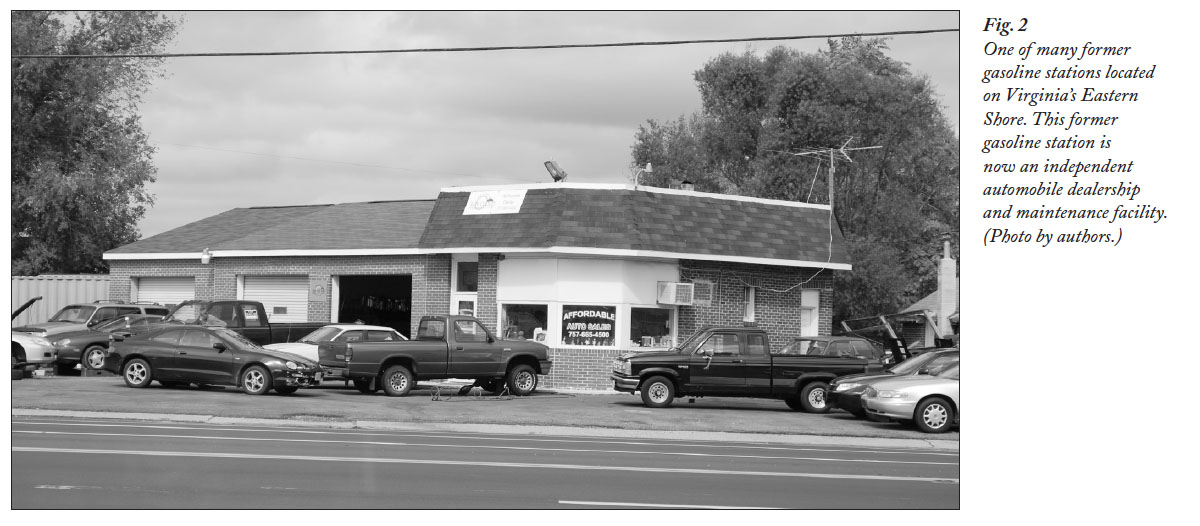 Display large image of Figure 2
Display large image of Figure 24 The research question and fieldwork presented a series of logistical questions—for example, the matter of what kinds of equipment were to be used in the field; time; costs; how to identify active, abandoned and recycled gasoline stations; how to identify sites of previously existing gasoline stations; how to record and organize our data; and what other ancillary information might need to be collected at each site location. Given the relative isolation of Virginia’s Eastern Shore, its proximity to Salisbury University, and its particular geographical shape as a peninsula—for example, its narrow width and manageable length (roughly 110 kilometres)—we determined that the entirety of the Virginia Eastern Shore would be the appropriate geography.
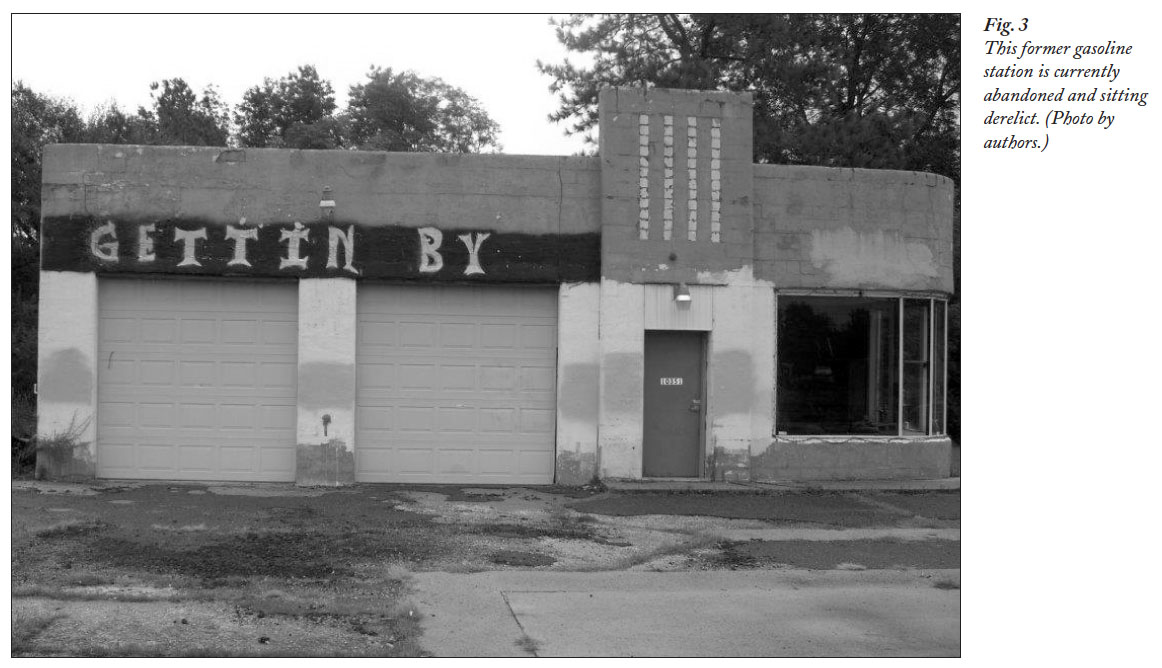 Display large image of Figure 3
Display large image of Figure 3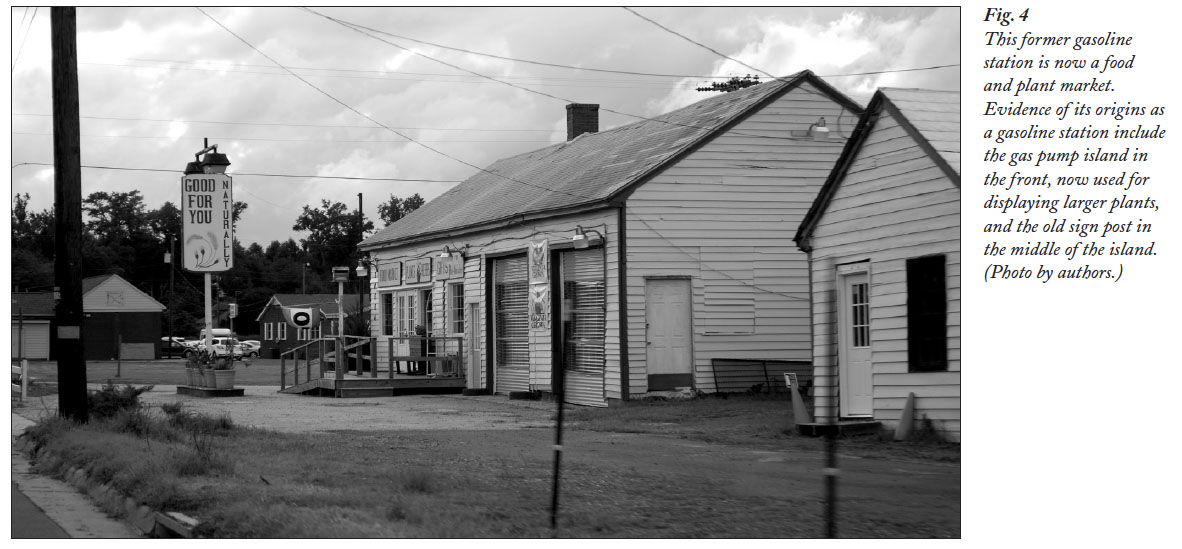 Display large image of Figure 4
Display large image of Figure 45 Affiliation with a university as a faculty member or student has particular advantages in such an undertaking. The primary advantage is cost: the authors had access to university-owned vehicles and equipment. Colleagues conducting a team-based research project in the Brazilian Amazon, for example, had previously purchased GPS-equipped laptop computers with mobile GIS software with a research grant (Caviglia-Harris et al. 2012), which were made available to us at no cost. While the environment of Virginia’s Eastern Shore is hardly extreme relative to the Brazilian Amazon, the ruggedized laptop computers proved to be an important asset; weather conditions during two of our fieldwork trips included steady downpours (Fig. 5). Fieldwork took place over four consecutive weekends, and the availability of university vehicles and GPS-equipped laptop computers with GIS software enabled us to utilize our time in the field efficiently.
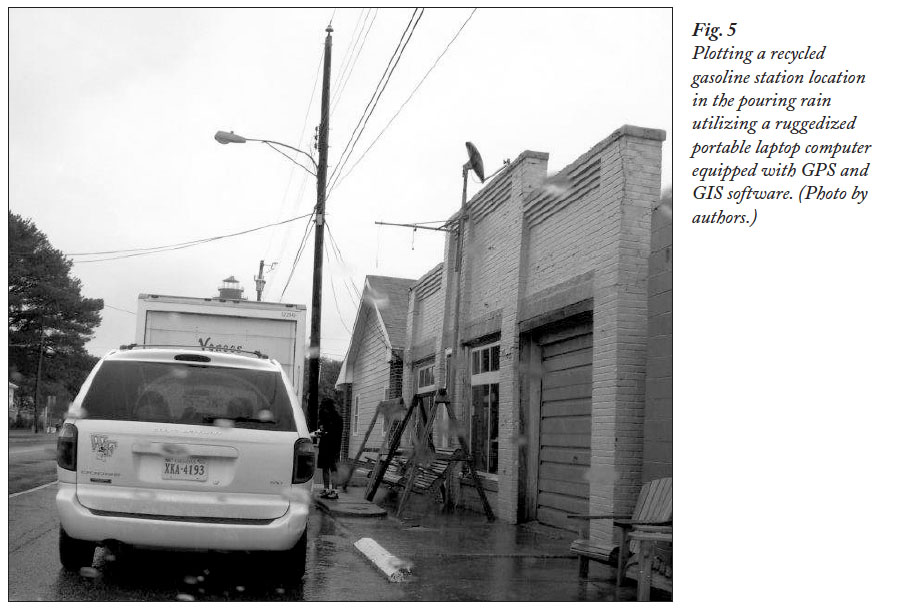 Display large image of Figure 5
Display large image of Figure 56 Before going into the field, we established a standardized procedure for recording data, including, first of all, how to determine whether a particular structure is, or was at one time, a functioning gasoline station. Gasoline stations that are currently active are quite easy to identify: the presence of gasoline pumps, islands and corporate branding are obvious indicators (Sculle 1981). The same is true for most abandoned gasoline stations. However, in order to identify the ones from before gasoline station buildings were standardized and are now abandoned or currently operating under new uses (for example, as restaurants, homes, post offices), we had to consult literature on gasoline station architectures. For this task, we turned to the authoritative works of cultural geographer John Jakle, who is widely known for his work on “roadside” American culture, including gasoline stations ( Jakle 1978; Jakle and Wilson 1992; Jakle and Sculle 1994). These studies (and others, like Vieyra 1979; Margolies 1993; Jackson 1985; and Yergin 1991) review various gasoline station architectural styles and establish that gasoline station architecture changed styles roughly every decade, reflecting wider changes in consumer behaviour and changes in the gasoline retail market. Gasoline station location patterns also changed as automobiles became more pervasive, roads improved, new roads were built and new transportation technologies emerged, such as high-speed limited-access highways (Jakle and Sculle 1994; Weber 2005; Moon 1994; Norris 1987; Jones and Simmons 1990). This knowledge combined with our ability to record locational data allowed us to identify gasoline station locations and location patterns, and to explore how location patterns have changed through time.
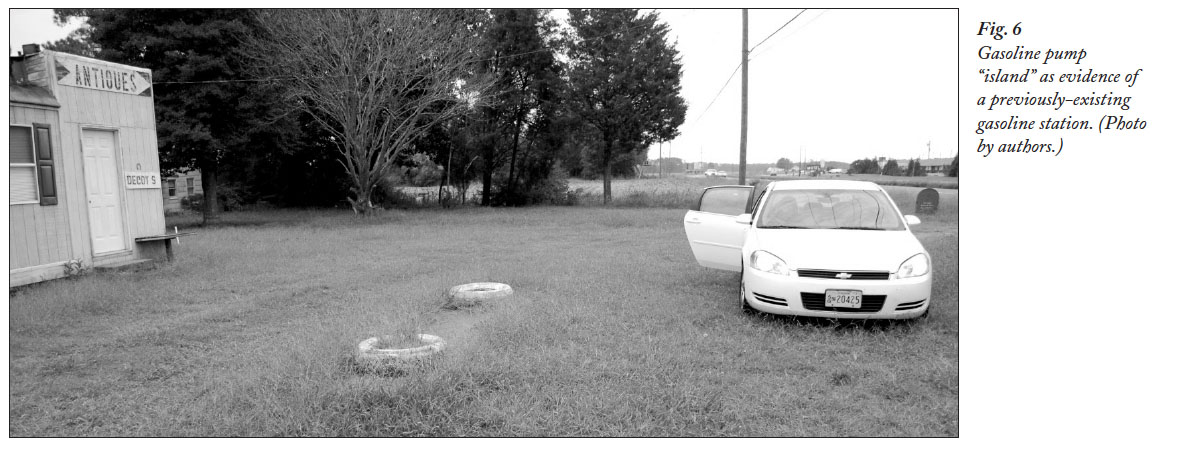 Display large image of Figure 6
Display large image of Figure 67 Given the size of the study area, we needed to limit the time spent at each location to no more than a few minutes. This required us to be familiar with various architectural styles of gasoline stations and their location patterns in order to quickly identify whether a particular location currently contained an active, abandoned or recycled gasoline station, or had at some point in the past. We also needed to collect a precise geographic location using our GPS receiver at each location, which usually took about thirty seconds to a minute. In order to save as much time as possible, we needed to keep the data recorded in the field to a minimum: we identified whether locations housed gasoline stations currently or had done so in the past; their geographic coordinates; their attributes, such as whether a location sported a convenience store or had a garage, whether gasoline is currently sold or not; and an estimate of the decade in which the gasoline station was built given its architectural cues. We also took digital photographs of each station and catalogued them so that further analyses of architecture styles could be conducted following fieldwork, and whatever additional information gleaned could be reconciled with our field-based data. Despite efforts to minimize time spent at each location and potential location, we determined that several field trips would be required.
Fieldwork and Proxy Records
8 Identifying currently operating gasoline stations was very straightforward given the presence of gasoline pumps, advertising and readily identifiable modern gasoline station architecture—the “oblong box” prevalent in various forms since the 1930s (Macpherson and de Socio 2013; Jakle and Sculle 1994; Vieyra 1979). In identifying locations where gasoline stations may have previously operated, the most important styling clue was the gasoline station island or a remnant shape of one on a resurfaced parking lot (Fig. 6). The presence of gull-wing lights, which were prevalent prior to the 1970s, provided another clue (Fig. 7), as did the presence of garage bays and vehicle maintenance facilities. The presence of an old gasoline station sign by the edge of a road or on the corner of a structure was, well, a dead giveaway. Yet another clue was an oblong, box-type building on the corner of two roads that is angled and set back with pavement and multiple access points for vehicles. These are just some examples of the kinds of physical attributes that we looked for; indeed, there are multiple locational and architectural styling clues that we learned in the field while evaluating locations.1
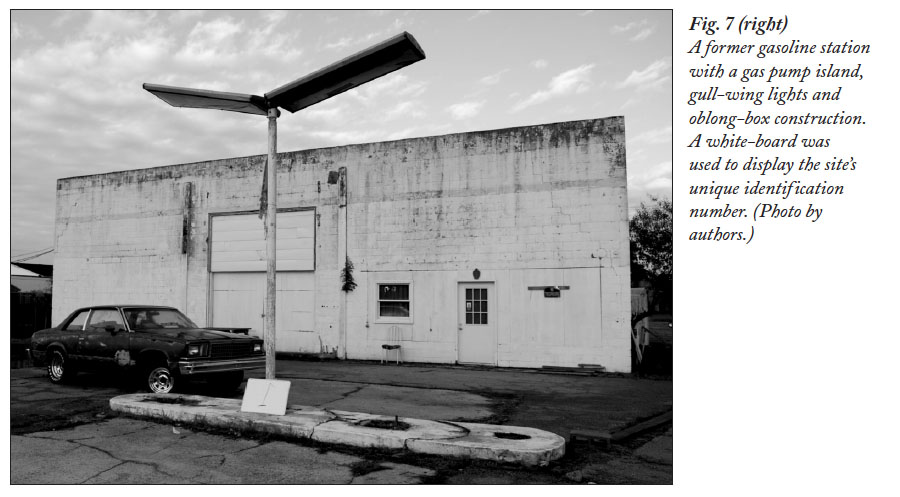 Display large image of Figure 7
Display large image of Figure 79 While it is possible to do fieldwork with paper and pen, recording street addresses and location attributes by hand (see, for example, Almy 2012), modern mobile tools like laptop computers, and mobile geographical tools like GPS and the ESRI ArcPad, a field mapping and data collection software on our ruggedized laptop computer, saved an inordinate amount of time, both in the field and afterwards (Caviglia-Harris et al. 2012). For example, we developed an ArcPad-based template that structured the data before the start of the fieldwork, a structure that included a drop-down menu with a yes-or-no feature for each attribute that we had determined to look for ahead of time, allowing for the attribute data to be logged quickly and accurately (Fig. 8). To record the most accurate location possible with our GPS receiver, we adjusted the Positional Dilution of Precision (PDOP) to less than five, captured as many points as we could within thirty seconds and averaged them to reduce the GPS margin of error in triangulating between the satellites above and our location. The recorded data was then later easily imported into ArcMAP for spatial analysis. Indeed, the advent of modern mobile mapping technologies makes the process of classifying historical geographies easier, quicker and more precise, making fieldwork more time-efficient and cost-effective (Morris 2009; Caviglia-Harris et al. 2012).
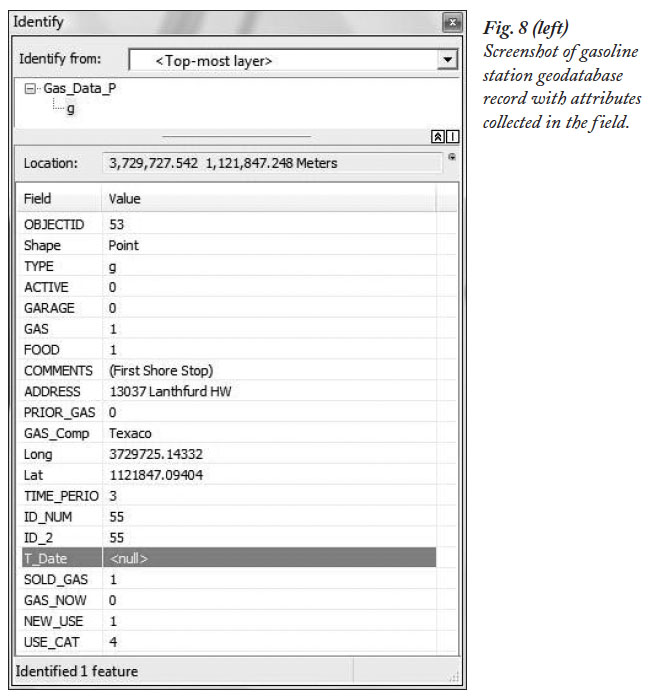 Display large image of Figure 8
Display large image of Figure 810 Paper-based road maps are always important for geographers conducting fieldwork, largely as a tool for navigation, but also as a way of getting a “lay of the land.” Modern digital mapping software, however, takes road maps a step further. Used in conjunction with our GPS receiver and ArcPad, for example, routes taken were digitally recorded in real time and instantly updated with the geographic coordinates of gasoline stations that we input at each presumed gasoline station location. This allowed us to minimize taking the same route more than once, and otherwise wasting time over routes already taken and investigated. Moreover, when a second or third visit to a site was warranted, direct routes from our current location were easily devised. Again, the amount of time saved in the field by using digital real time mapping technologies cannot be overstated.
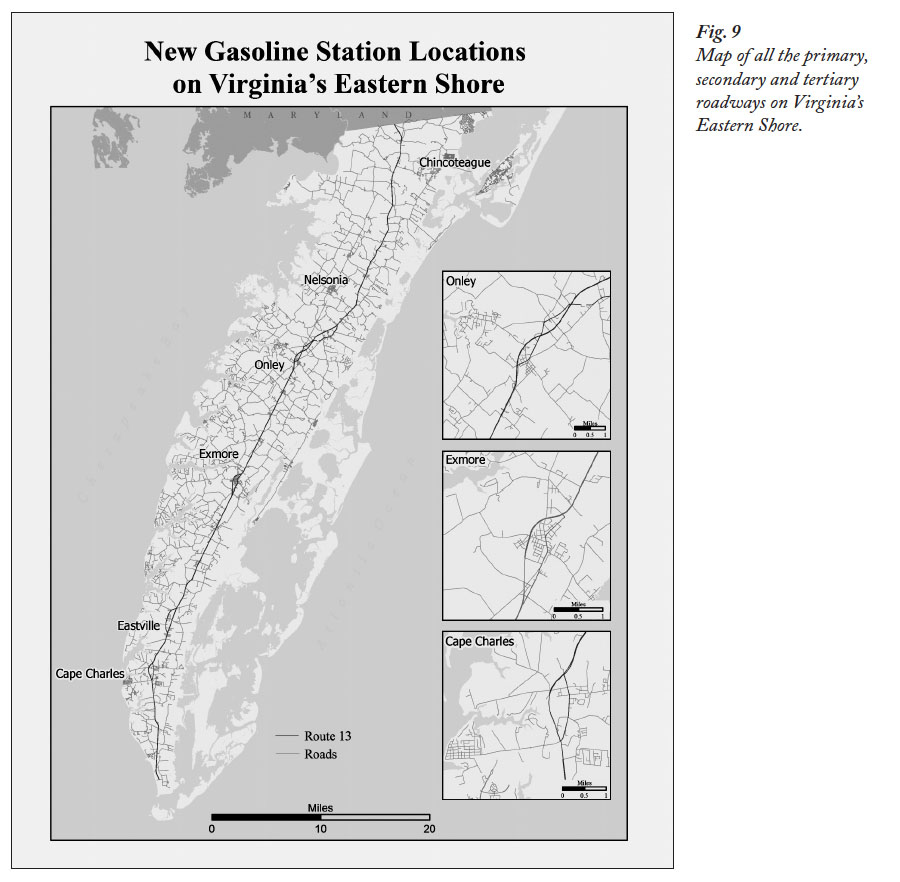 Display large image of Figure 9
Display large image of Figure 911 During the fieldwork stage, we explored every primary, secondary and tertiary roadway in an attempt to locate every gasoline station location past and present (Fig. 9). Where structures appeared to have at one time been a gasoline station, and at locations where our training and general familiarity with the area told us there should be a gasoline station but there wasn’t, we needed to investigate further. This entailed exploring the site in more detail, looking for clues, and also speaking to people if any were present.
12 One particular strategy that proved to yield a wealth of information in some cases was to stop in the local post office and speak with the clerk on duty. Post office clerks in the small towns of Virginia’s Eastern Shore were typically females in their sixties and seventies and long-time residents of the town. Their knowledge of local roads and business locations (particularly businesses no longer in operation) proved invaluable. In addition, retailers in several locations that we presumed were former gasoline stations were also quite helpful—particularly when we purchased goods from their store. Needless to say, we often had an excess of sodas and chips at the end of each trip. Indeed, while modern mobile mapping and field computing technologies are now indispensable and greatly enhance the ability to conduct fieldwork accurately and in a timely fashion, they cannot entirely replace old fashioned field methods. Boots on the ground, exploring sites in person, and interacting with local residents remain a necessary and enriching component of geographical fieldwork. The post office dataset was used as a proxy record because we discovered during an early phase in the field that gasoline stations built prior to the 1950s seemed to be located near or even adjacent to post offices in rural town centres. Using this insight in conjunction with speaking with postal clerks and others, we discovered fifteen historical gasoline stations.
13 Digital proxy records were used to verify much of our research and to help locate gasoline stations that had been built over or torn down. Using proxy records to find historical sites is very helpful and we used two main sources of proxy records: digital underground storage tank data from the Virginia Department of Environmental Quality (VDEQ; Fig. 10), and a United States Geological Survey (USGS) Geographic Names Information Systems list of historic United States Postal Service offices (Fig. 11). The digital underground storage tank data originated as loosely linked spreadsheets in Microsoft Excel and needed to be joined together and sorted. The tank data included postal addresses of the facilities, which were then geo-referenced within ArcMAP and assigned coordinates and transferred to ArcPad for use in the field. The tank data was spotty—indeed, our fieldwork proved much more robust—but we did discover two locations that had been torn down (Fig. 12).
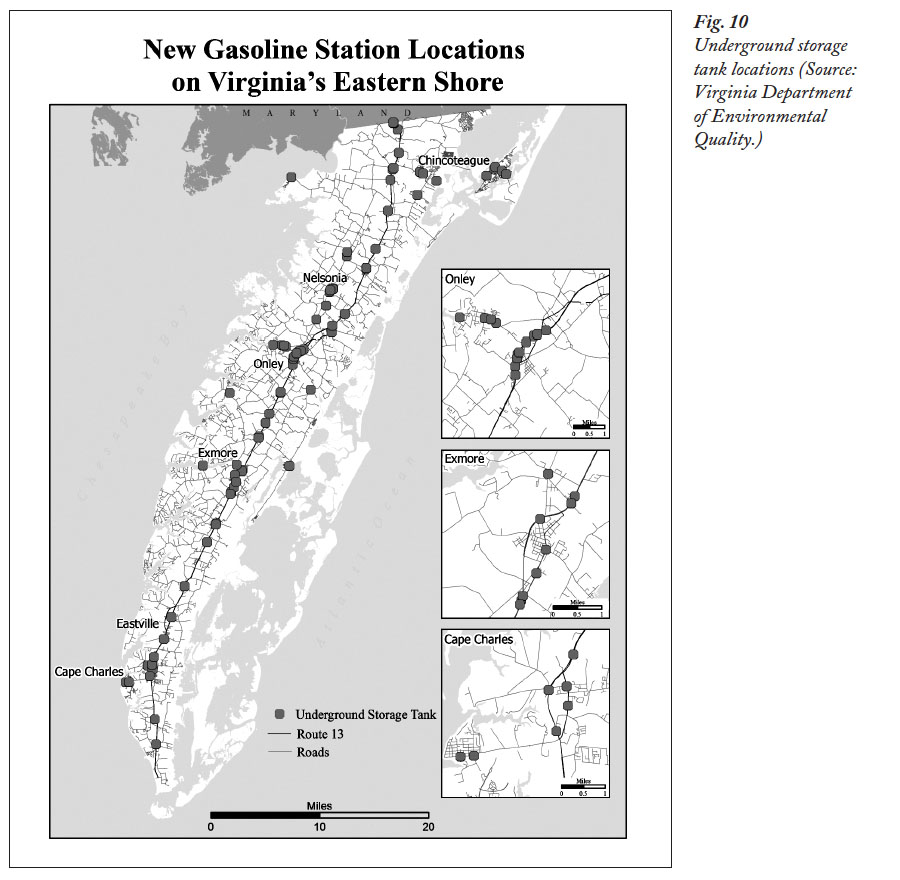 Display large image of Figure 10
Display large image of Figure 10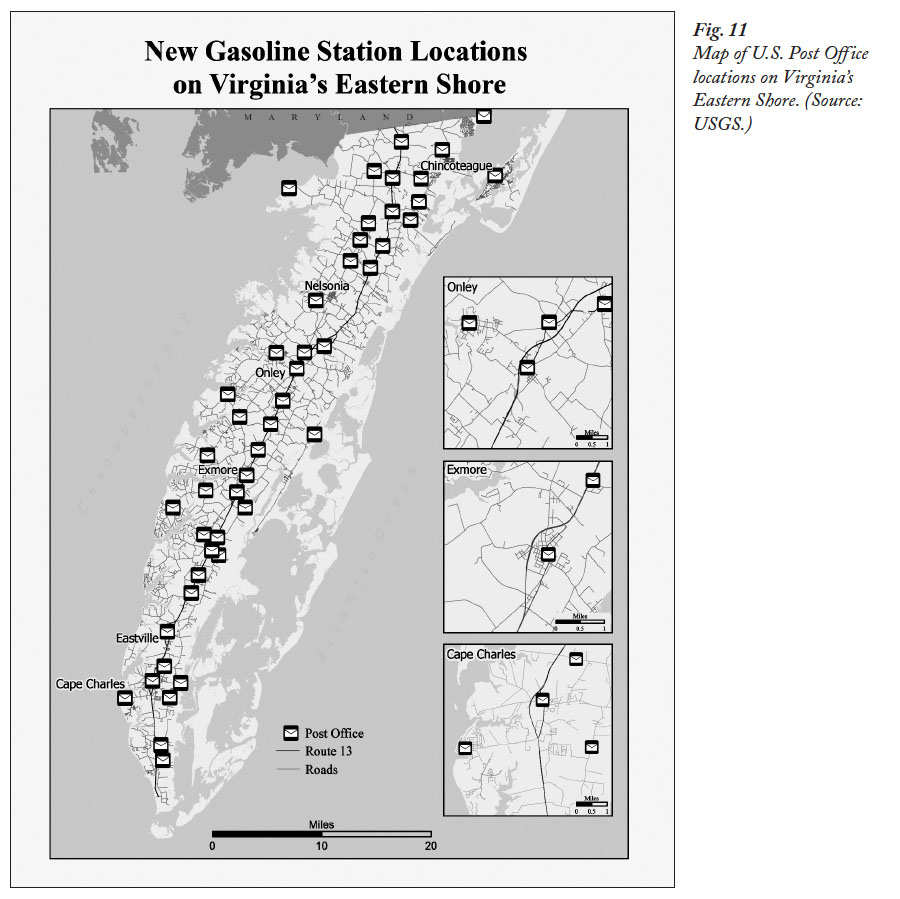 Display large image of Figure 11
Display large image of Figure 11 Display large image of Figure 12
Display large image of Figure 12Laboratory Analysis and Classifying Data
14 After conducting fieldwork, we reviewed and organized our data at Salisbury University’s GIS Laboratory, housed in the Department of Geography and Geosciences, which is equipped with the only computers on campus with GIS and spatial analysis software. In the lab, the digital photographs of each site were analyzed and the attributes of each suspected gasoline station further evaluated. The photographs helped to determine if each site was actually a gasoline station, when it was built, and current uses. The process utilized in the field to assign yes-or-no values to particular attributes was replicated in the laboratory to double-check each site. Assigning each verified gasoline station the approximate building date based on architectural styling and other clues was done primarily in the laboratory using the digital photos.
15 Digital photographs were later geo-tagged using Google Picasa. However, there is no azimuth2 in Picasa to indicate directions; hence, gasoline stations that occupy different corners of the same intersection must share the same coordinates. In our data there are several locations where as many as three gas stations are located at a single intersection. Nevertheless, these geo-tagged digital photographs are now being catalogued and stored at Salisbury University’s Edward H. Nabb Research Center for Delmarva History and Culture, and the geographical coordinates documented for future coordinate-based catalogue record search queries (see Bidney 2010). An online clickable map of all current and former gasoline stations on Virginia’s Eastern Shore is being constructed and will be hosted by Salisbury University’s Nabb Center for Delmarva History and Culture (Fig. 13). The gasoline pump icons, located by recorded geographical coordinates, will be clickable and will lead users to digital photographs of the particular active or inactive gasoline station. The online database, once established, will be accessible by the general public.
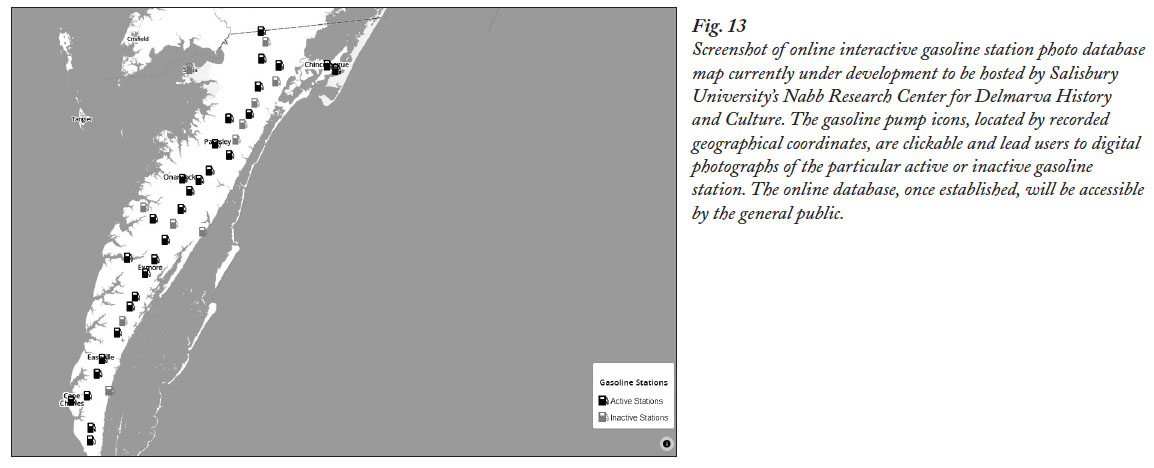 Display large image of Figure 13
Display large image of Figure 1316 The gasoline station location and attribute data collected in the field was then catalogued within a GIS (ArcPad). Cataloguing in GIS is a relatively easy process because spatial data like geographic coordinates are static (Le 2012: 63). There are multiple file formats for GIS, but the most common are Shapefiles and ESRI’s Geodatabases’ feature classes. Shapefiles are ideal because they can be viewed with a myriad of GIS software including open source software. However, digital photographs must be stored separately, taking up more memory and computer power, and not linked with location data in the GIS. Geodatabases, meanwhile, are not open source and must be accessed with ESRI-based GIS software, but digital photographs can be embedded and linked for quick viewing when clicking on a location. Since the university’s GIS laboratory is equipped with ESRI software, our work was catalogued in a Geodatabase for further spatial analyses to be performed.
17 While gasoline station architectural styles do not neatly conform to time categories entirely, identifying gasoline stations by decade built offers an effective if generalized means of categorizing gasoline station architecture as defined in the literature (Macpherson and de Socio 2013: 16). After assigning the estimated date of origin of each gasoline station location, particular architectural and functional patterns by decade became readily apparent (Table 1). For example, the earliest gasoline stations (pre-1930s) were usually general stores located in and near town centres and near access points to large urban neighbourhoods (Yergin 1991: 209; Fig. 14). As automobiles became more common, and more roads were built to accommodate them, gasoline stations began to pull away from town centres and neighbourhoods and locate along major arterial roadways with high traffic volumes (Macpherson and de Socio 2013: 13; Weber 2005; Jakle and Sculle 1994). During the Great Depression, gasoline stations began to offer vehicle maintenance services as a way to augment sales amid declining sales in gasoline. Hence, garages became a common feature of gasoline stations in the 1930s through the 1960s (Fig. 15). Food marts, meanwhile—once part of general and country stores—were no longer among the goods and services offered at gasoline stations.
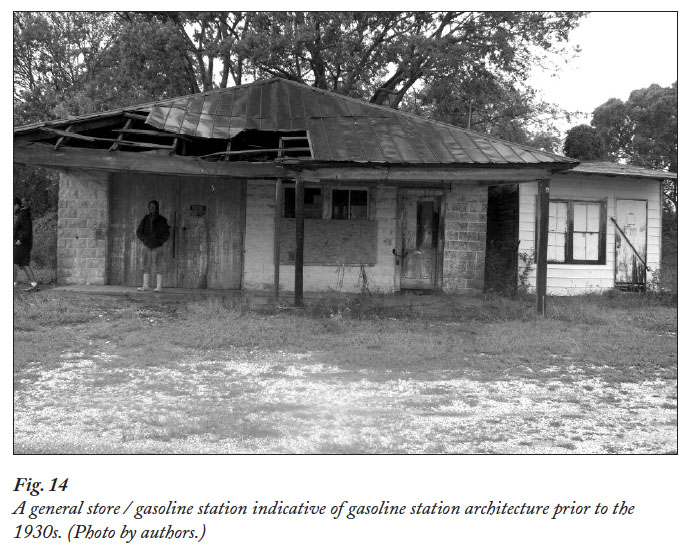 Display large image of Figure 14
Display large image of Figure 14 Display large image of Figure 15
Display large image of Figure 1518 In later years, beginning in the 1970s, the function of gasoline stations changed once again in response to changing technologies in automobiles (for example, newer metals were corrosion-resistant and therefore reduced the frequency of maintenance needed, the fuel was cleaner and fuel-injection engines were more efficient) and telecommunications. In short, modern automobiles go farther, last longer and consume gasoline more efficiently. Consequently, newer gasoline stations began to transition away from vehicle maintenance services and began offering credit card–based self-service. By the 1980s, convenience stores became the norm, and that model has evolved into “super” convenience stores and fast-food restaurants in the 1990s and beyond. Indeed, garages and food marts enjoyed an inverse relationship in gasoline station functions: food marts declined as garages became the dominant model in the 1930s through the 1960s, but the trend reversed from the 1970s. As gasoline stations transitioned away from garages, they once again began to offer food and other goods, often partnering with national convenience and fast-food restaurant chains (Fig. 16).
19 Location patterns also continued to change to accommodate the increased fuel efficiency and better overall maintenance. Fewer gasoline stations are necessary, and so the number of gasoline stations actively selling gasoline has steadily declined since the 1970s, leaving older gasoline stations to be abandoned or recycled into new uses (Fig. 17; Federal Highway Administration 2009; Ford 2012; Campoy 2008; Arenson 1983; Macpherson and de Socio 2013).
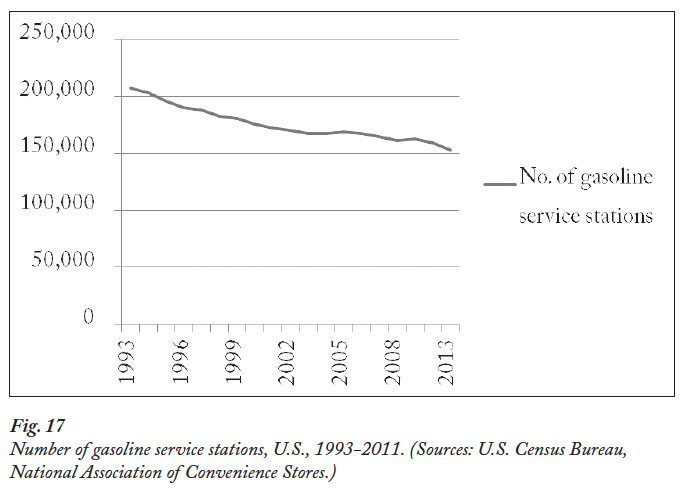 Display large image of Figure 17
Display large image of Figure 17Lessons Learned
20 One of the more valuable lessons we learned during our field trips is that while modern mobile mapping and field computing technologies greatly enhance the ability to conduct fieldwork accurately and in a timely fashion, face-to-face interaction with people in the field remains an important, even indispensable, component of fieldwork. People familiar with the local economy and history of several towns proved extremely helpful to the point that we actively sought out conversations with local residents whenever we could. Postal clerks, as noted above, proved to be particularly helpful in knowing of past businesses and locations. Most people were very accommodating and eager to help us or point us to someone who could.
21 We also learned that other kinds of equipent beyond digital mapping and field computing technologies are important for conducting historical research, primarily for safety purposes. We originally scheduled our fieldwork trips so that they would be completed by nightfall, since locating and investigating old buildings and locations usually requires daylight. Also, Virginia’s Eastern Shore is largely rural, meaning that most of its roads contain no lighting. And because the Eastern Shore is very flat throughout, drainage ditches are present along the sides of nearly every roadway on the shore, whether primary, secondary or tertiary. Further, many of the locations we visited were unpaved and the property derelict. After just our first outing in which our university vehicle took somewhat of a beating, we decided that we would be better served with an all-wheel-drive vehicle and would on subsequent trips utilize the university’s only SUV, a Jeep Liberty—a decision that proved very useful. We also purchased a yellow strobe light for our vehicle since we were often entering and exiting roadways, and in many cases stopping on the side of a road to investigate a property. In order to use our time in the field more efficiently, we decided to work into the night on a couple of occasions, but this idea was quickly abandoned after a minor incident on each occasion, including a runaway pit bull and a stint in the ditch after almost flipping our jeep. After these more or less harrowing experiences, we ceased night-time work in the interest of safety.
22 Finally, the use of ruggedized equipment such as the laptop computer proved to be very helpful in harsh weather conditions. Fieldwork exploring historical and in many cases derelict structures can be rough in its own right, damaging vehicles and equipment. Two separate digital cameras, for example, were lost in the field, one broken beyond repair and the other severely damaged. An all-wheel-drive vehicle, ruggedized laptop computer, and a sturdier digital camera were key for successful work in this case study of current and historical gasoline station locations and location patterns.
Summary and Conclusion
23 Modern mobile mapping and field computing technologies have opened the door to conducting spatiotemporal analyses of changing economic and cultural landscapes by greatly enhancing the ability to conduct fieldwork and document historical geographies accurately and in a timely and orderly fashion (Morris 2009). Doing such historical geographical research in the past was unwieldy in comparison: it was costly, time-consuming and often error-prone (Caviglia-Harris et al. 2012); fieldwork would be conducted by collecting attribute data with pencil and paper, causing more time to be spent at each single location, and using paper-based road maps and estimating locations by marking them on paper maps. The act of getting from one location to another itself would be more time-consuming and redundant. Data collected in the field would then later be transposed and organized in ways that allowed for calculations of estimated distances between locations, and for spatial analysis to be performed—again, largely by hand. Even modern digital cameras saved much time and money, despite the loss of two in the field. Digital photographs were quite easily uploaded into GIS and linked to specific locations by geo-tagging the photographs with the specific geographical coordinates of corresponding gasoline stations.
24 This paper presented how, in one case study, modern mobile mapping and field computing technologies were utilized to explore historical and changing economic geographies related to retail gasoline stations. By consulting literature on varying architectural styles of gasoline stations by decade, we were able to identify and digitally map all current and formerly existing gasoline stations located throughout Virginia’s Eastern Shore and their attributes (Macpherson and de Socio 2013). This data—all of it digitally collected in the field—could then readily be further collated and explored in a computer laboratory, and spatial analysis performed. The ability to organize and catalogue the data as it was collected in real time improved accuracy, saved time, and reduced errors relative to recording and collating data by hand. The speed and accuracy of modern mobile mapping and field computing technologies likewise makes conducting historical geographical research and spatial analysis of historical data much more doable; indeed, these technologies open up a whole world of past human geographies to modern exploration (Morris 2009). Finally, we learned that these modern technologies do not entirely replace traditional field methods in geography, like face-to-face interaction with people, exploring sites with boots on the ground, and dealing with the elements. Rather, these technologies largely augment and enhance fieldwork capabilities.
The authors would like to thank two anonymous reviewers and Dr. Amy Liu for their comments and suggestions regarding an earlier draft of this article.

